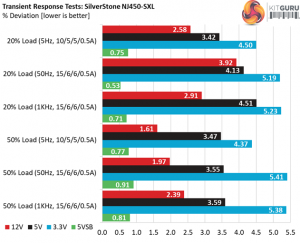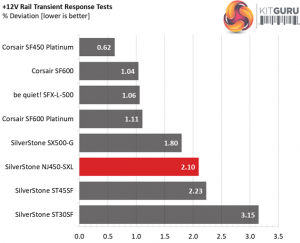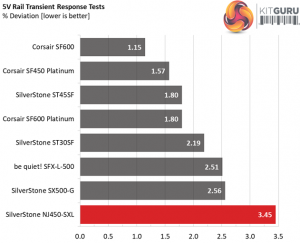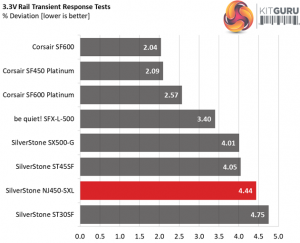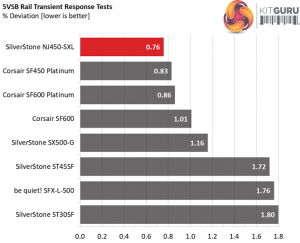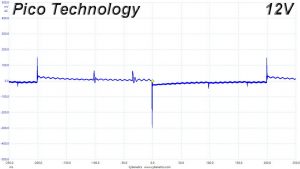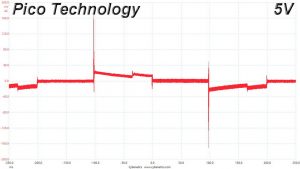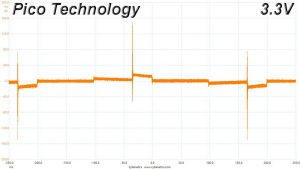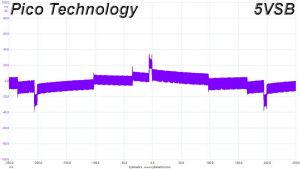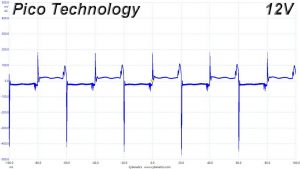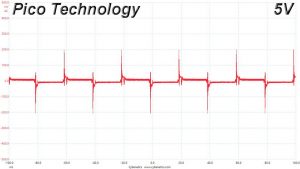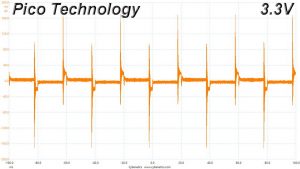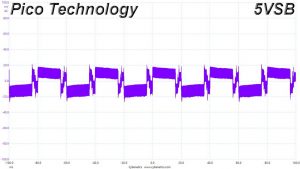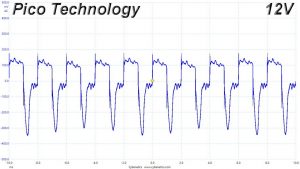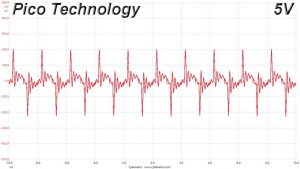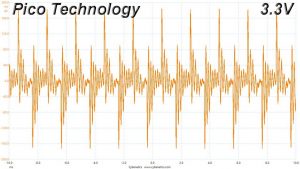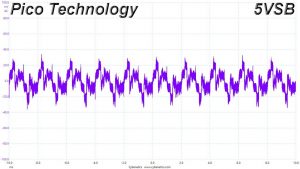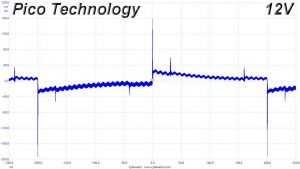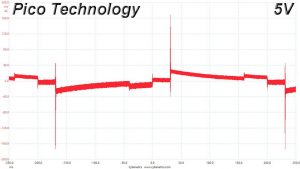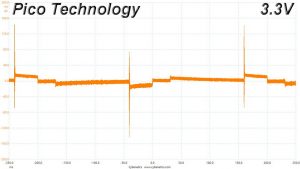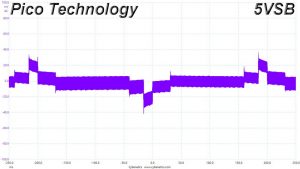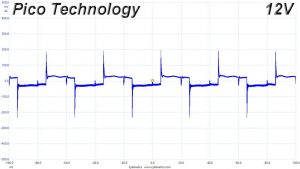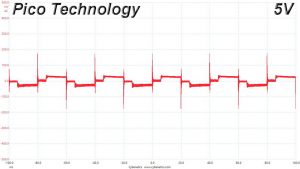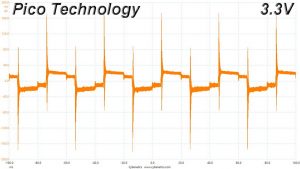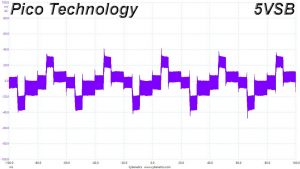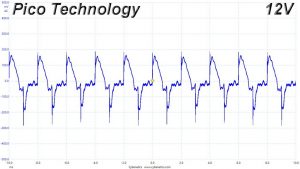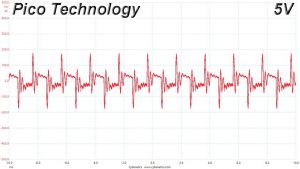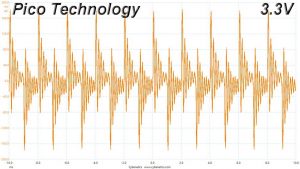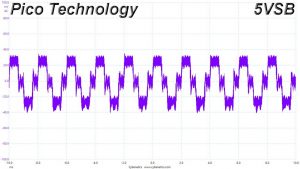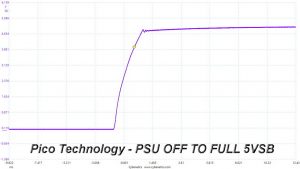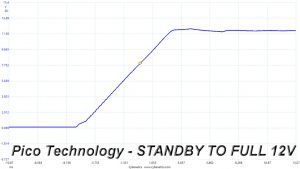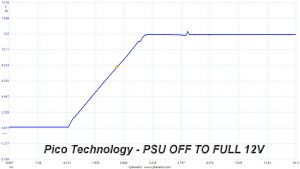Advanced Transient Response Tests
For details on our transient response testing, please click here.
These tests are crucial because they simulate the transient loads a power supply is likely to handle (such as booting a RAID array or an instant 100 percent load of CPU/GPUs). We call these “Advanced Transient Response Tests” and they are designed to be very tough to master, especially for a unit with a capacity of less than 500W.
In all of the tests, we use an oscilloscope to measure the voltage drops caused by the transient load. The voltages should remain within the ATX specification's regulation limits.
Advanced Transient Response at 20 Percent – 200ms
| Voltage | Before | After | Change | Pass/Fail |
|---|---|---|---|---|
| 12V | 11.997V | 11.688V | 2.58% | Pass |
| 5V | 5.033V | 4.861V | 3.42% | Pass |
| 3.3V | 3.311V | 3.162V | 4.50% | Pass |
| 5VSB | 5.070V | 5.032V | 0.75% | Pass |
Advanced Transient Response at 20 Percent – 20ms
| Voltage | Before | After | Change | Pass/Fail |
|---|---|---|---|---|
| 12V | 11.996V | 11.526V | 3.92% | Pass |
| 5V | 5.033V | 4.825V | 4.13% | Pass |
| 3.3V | 3.311V | 3.139V | 5.19% | Fail |
| 5VSB | 5.070V | 5.043V | 0.53% | Pass |
Advanced Transient Response at 20 Percent – 1ms
| Voltage | Before | After | Change | Pass/Fail |
|---|---|---|---|---|
| 12V | 11.995V | 11.646V | 2.91% | Pass |
| 5V | 5.032V | 4.805V | 4.51% | Pass |
| 3.3V | 3.311V | 3.138V | 5.23% | Fail |
| 5VSB | 5.071V | 5.035V | 0.71% | Pass |
Advanced Transient Response at 50 Percent – 200ms
| Voltage | Before | After | Change | Pass/Fail |
|---|---|---|---|---|
| 12V | 11.981V | 11.788V | 1.61% | Pass |
| 5V | 5.014V | 4.840V | 3.47% | Pass |
| 3.3V | 3.293V | 3.149V | 4.37% | Pass |
| 5VSB | 5.034V | 4.995V | 0.77% | Pass |
Advanced Transient Response at 50 Percent – 20ms
| Voltage | Before | After | Change | Pass/Fail |
|---|---|---|---|---|
| 12V | 11.980V | 11.744V | 1.97% | Pass |
| 5V | 5.015V | 4.837V | 3.55% | Pass |
| 3.3V | 3.292V | 3.114V | 5.41% | Fail |
| 5VSB | 5.035V | 4.989V | 0.91% | Pass |
Advanced Transient Response at 50 Percent – 1ms
| Voltage | Before | After | Change | Pass/Fail |
|---|---|---|---|---|
| 12V | 11.980V | 11.694V | 2.39% | Pass |
| 5V | 5.014V | 4.834V | 3.59% | Pass |
| 3.3V | 3.293V | 3.116V | 5.38% | Fail |
| 5VSB | 5.035V | 4.994V | 0.81% | Pass |
Since almost all caps in the secondary side are polymer ones, their capacity is limited – so it is natural to see mediocre transient response performance. The 3.3V rail registers the worst performance failing in four out of the six tests.
Here are the oscilloscope screenshots we took during Advanced Transient Response Testing:
Transient Response At 20 Percent Load – 200ms
Transient Response At 20 Percent Load – 20ms
Transient Response At 20 Percent Load – 1ms
Transient Response At 50 Percent Load – 200ms
Transient Response At 50 Percent Load – 20ms
Transient Response At 50 Percent Load – 1ms
Turn-On Transient Tests
In the next set of tests, we measure the NJ450-SXL’s response in simpler transient load scenarios—during its power-on phase.
For our first measurement, we turn the NJ450-SXL off, dial in the maximum current the 5VSB rail can handle, and switch the PSU back on.
In the second test, we dial the maximum load the +12V rail can handle and start the power supply while it is in standby mode. In the last test, while the PSU is completely switched off (we cut off the power or switch it off through its power switch), we dial the maximum load the +12V rail can handle before restoring power. The ATX specification states that recorded spikes on all rails should not exceed 10 percent of their nominal values (+10 percent for 12V is 13.2V, and 5.5 V for 5V).
The results are pretty good. We only notice a small spike during the last test, which is nothing to worry about.
 KitGuru KitGuru.net – Tech News | Hardware News | Hardware Reviews | IOS | Mobile | Gaming | Graphics Cards
KitGuru KitGuru.net – Tech News | Hardware News | Hardware Reviews | IOS | Mobile | Gaming | Graphics Cards


